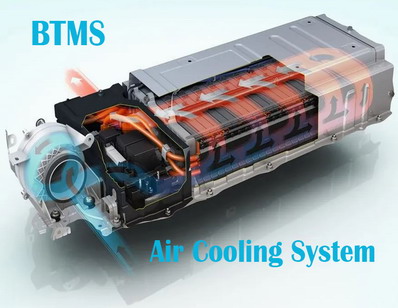With the rapid development of new energy technologies, energy storage battery packs (such as lithium-ion batteries, sodium-ion batteries, etc.) are increasingly used in power systems, electric vehicles, data centers, and other fields. The safety and lifespan of batteries are closely related to their operating temperature. NTC (Negative Temperature Coefficient) temperature sensors, with their high sensitivity and cost-effectiveness, have become one of the core components for battery temperature monitoring. Below, we explore their applications, advantages, and challenges from multiple perspectives.
I. Working Principle and Characteristics of NTC Temperature Sensors
- Basic Principle
An NTC thermistor exhibits an exponential decrease in resistance as temperature rises. By measuring resistance changes, temperature data can be indirectly obtained. The temperature-resistance relationship follows the formula:
RT=R0⋅eB(T1−T01)
where RT is the resistance at temperature T, R0 is the reference resistance at temperature T0, and B is the material constant.
- Key Advantages
- High Sensitivity: Small temperature changes lead to significant resistance variations, enabling precise monitoring.
- Fast Response: Compact size and low thermal mass allow real-time tracking of temperature fluctuations.
- Low Cost: Mature manufacturing processes support large-scale deployment.
- Wide Temperature Range: Typical operating range (-40°C to 125°C) covers common scenarios for energy storage batteries.
II. Temperature Management Requirements in Energy Storage Battery Packs
The performance and safety of lithium batteries are highly temperature-dependent:
- High-Temperature Risks: Overcharging, over-discharging, or short circuits can trigger thermal runaway, leading to fires or explosions.
- Low-Temperature Effects: Increased electrolyte viscosity at low temperatures reduces lithium-ion migration rates, causing abrupt capacity loss.
- Temperature Uniformity: Excessive temperature differences within battery modules accelerate aging and reduce overall lifespan.
Thus, real-time, multi-point temperature monitoring is a critical function of Battery Management Systems (BMS), where NTC sensors play a pivotal role.
III. Typical Applications of NTC Sensors in Energy Storage Battery Packs
- Cell Surface Temperature Monitoring
- NTC sensors are installed on the surface of each cell or module to directly monitor hotspots.
- Installation Methods: Fixed using thermal adhesive or metal brackets to ensure tight contact with cells.
- Internal Module Temperature Uniformity Monitoring
- Multiple NTC sensors are deployed at different positions (e.g., center, edges) to detect localized overheating or cooling imbalances.
- BMS algorithms optimize charge/discharge strategies to prevent thermal runaway.
- Cooling System Control
- NTC data triggers activation/deactivation of cooling systems (air/liquid cooling or phase-change materials) to dynamically adjust heat dissipation.
- Example: Activating a liquid cooling pump when temperatures exceed 45°C and shutting it off below 30°C to save energy.
- Ambient Temperature Monitoring
- Monitoring external temperatures (e.g., outdoor summer heat or winter cold) to mitigate environmental impacts on battery performance.
IV. Technical Challenges and Solutions in NTC Applications
- Long-Term Stability
- Challenge: Resistance drift may occur in high-temperature/humidity environments, causing measurement errors.
- Solution: Use high-reliability NTCs with epoxy or glass encapsulation, combined with periodic calibration or self-correction algorithms.
- Complexity of Multi-Point Deployment
- Challenge: Wiring complexity increases with dozens to hundreds of sensors in large battery packs.
- Solution: Simplify wiring via distributed acquisition modules (e.g., CAN bus architecture) or flexible PCB-integrated sensors.
- Nonlinear Characteristics
- Challenge: The exponential resistance-temperature relationship requires linearization.
- Solution: Apply software compensation using lookup tables (LUT) or the Steinhart-Hart equation to enhance BMS accuracy.
V. Future Development Trends
- High Precision and Digitization: NTCs with digital interfaces (e.g., I2C) reduce signal interference and simplify system design.
- Multi-Parameter Fusion Monitoring: Integrate voltage/current sensors for smarter thermal management strategies.
- Advanced Materials: NTCs with extended ranges (-50°C to 150°C) to meet extreme environment demands.
- AI-Driven Predictive Maintenance: Use machine learning to analyze temperature history, predict aging trends, and enable early warnings.
VI. Conclusion
NTC temperature sensors, with their cost-effectiveness and rapid response, are indispensable for temperature monitoring in energy storage battery packs. As BMS intelligence improves and new materials emerge, NTCs will further enhance the safety, lifespan, and efficiency of energy storage systems. Designers must select appropriate specifications (e.g., B-value, packaging) for specific applications, optimize sensor placement, and integrate multi-source data to maximize their value.
Post time: Apr-06-2025



